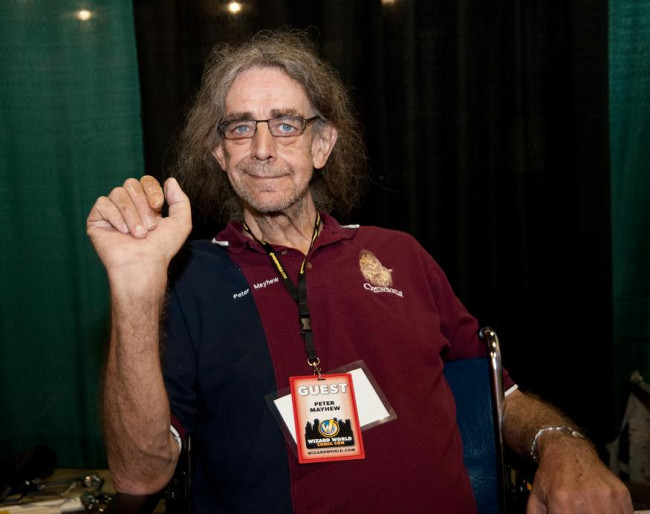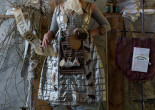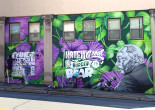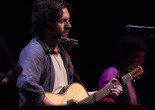NEPA NERD: Peter Mayhew reflects on Chewbacca and a Wookiee-sized life before Wizard World Philadelphia

It’s hard to believe that “Star Wars” just turned 35 this past week and it’s still as culturally relevant and significant to all of us as ever.
Like most young boys, I grew up watching the original saga on television and my worn-out trilogy of VHS tapes – I still have a “Return of the Jedi” hoodie my mother dressed me in as an infant. I never imagined that decades later I would be shaking hands with its stars, like Billy Dee Williams and Peter Mayhew, at last year’s Wizard World Philadelphia Comic Convention. This year, the convention boasts the return of Mayhew, better known as Chewbacca, along with Jeremy Bulloch, the man behind Boba Fett’s armor, in an all-star line-up that includes Marvel Comics legend Stan Lee, “Avengers” star Chris Hemsworth, “Star Trek” captains Patrick Stewart and William Shatner, and many, many more.
Meeting Mayhew was a big enough deal then, so they nearly had to encase me in Carbonite when I found out that I would be interviewing everyone’s favorite co-pilot in advance of this year’s con, which is being held at the Pennsylvania Convention Center May 31-June 3. If you can’t make it down or just don’t speak Shyriiwook, here’s what the English actor had to say.
NEPA SCENE: Being from England, what made you settle in Texas?
Peter Mayhew: I married a Texan.
NS: Ah, that will do it for you.
PM: Every time!
NS: You worked at a hospital before you started acting. What kind of work did you do there, and did you enjoy it?
PM: We used to move patients around from department to department. So yeah, I enjoyed it, and you do these things to make a living and you never know what’s going to happen.
NS: Did you end up enjoying acting more?
PM: Yeah, it’s a different way of living, of making a life. Each one has its own personalities, we say.
NS: When you were working on [your first film] “Sinbad and the Eye of the Tiger,” did you meet Ray Harryhausen?
PM: Yes.
NS: What was he like?
PM: Absolutely a wonderful man – really, really, really cool guy. You know, you see him and he’s just one of those guys that knows what he wants to do and knows how to do it.
NS: Did he make it easy to play your first role?
PM: Not really. When Ray wasn’t using models, I filled in for certain scenes you can’t do on film. Things that had to be full-sized were done with models.
NS: Was it challenging to act like that, considering this was the first time you were doing something along those lines? Obviously it was revolutionary special effects for the time.
PM: Yeah. Ray had got a reputation for the stick characters, when you think of his other movies that were revolutionary at that time.
NS: I saw on your website that you collect vintage movie posters. What is the prize of your collection?
PM: Oh, I don’t know. We’ve got so many. There’s so many that I enjoy and have sentimental value rather than actual value because we’ve been collecting them for a number of years. You look around the room where we’ve got them and say, “That one’s cool. That one – that’s my favorite.” It’s very difficult to be able to say, “That’s my favorite, but that’s worth a lot more than the other one.” So I don’t know. You get to like a poster and instantly you go, “I like that.”
NS: Are you a movie buff yourself?
PM: Yes and no. I’ll enjoy a movie, but I suppose it’s because I’ve done so many or a good few that you’re more thinking of how they did it rather than what it looks like onscreen. So your brain is probably working more on the special effects and stuff like that than on the actual storyline.
NS: Oh yeah, sure.
PM: Anyway, it’s kind of nice to be able to sit back and watch a movie and you don’t have to worry about how they did it.
NS: Do you have any favorite films or maybe a particular genre of film that you like?
PM: I like Westerns, probably the ‘40s and ‘50s, some of those movies, sort of the black and whites that are just verging just onto color. I think I go more by actors than the genre that they actually do.
NS: Do you have a favorite actor?
PM: Yes, it was Alec Guinness. Having worked with him, Ray Harryhausen, and a couple of others that made some wonderful movies and went on to make TV series as well as movies, there’s probably half a dozen actors that I would definitely go and see their movies.
NS: “Star Wars” being only your second film, was it really crazy to walk onto and to see someone you looked up to, like Sir Alec Guinness, or Peter Cushing, and then Christopher Lee, who was in the newer ones?
PM: Yes and no. I don’t know. It seemed weird at the time to put a costume on like the Wookiee costume, but then you look and you see other people that are dressed equally as bizarre and going from, say, the Docking Bay 94 where Harrison and the slug, and then you would probably go to the Cantina scene where you would see all the extras and minor characters dressed up in weird and wonderful costumes. It made you feel like, “What the hell am I doing here?” Then you look around and you go, “Oh, OK.” A lot of people suffered a lot more discomfort than I did. You take a job and you do it as best you can.
NS: Did you hang out with and relate to the actors behind the costumes more than the human characters?
PM: Not really because after a day’s work, you don’t want to be really want to be hanging around with them. Basically, I just wanted to get home and go back to normality, which was a lot different to what was happening at work. So it was kind of, “OK, we’ve done that. Let’s move on to the next thing.” And if you didn’t see the guys that were in the previous scene, OK. You would probably come across them again, but maybe not on that particular movie. And there’s so many people involved in making movies that sometimes you forget names, but faces you remember.
NS: You studied animal movements for the role, but you also had to show a lot of very human emotion through that mask. How were you able to convey that through such a thick suit?
PM: You’d have to look at it and find out. I don’t even know. It was one of those things that just happens. You put the mask on – Chewie changes, Peter changes. I can’t explain it, and I’ve tried to explain it and talk to people. They say, “How the hell did you do it?” I don’t know. I suppose I just let the imagination run and sort of look at the way that everybody else was reacting and I would react exactly the same way. There is no answer to that question and I’ve been searching for it for a long, long time. So I don’t know. That one I do not know the answer to.
NS: I’m sure you’ve got a million stories that you’ve probably told a million times about being in “Star Wars.” Is there a favorite one that you always tell or one that just comes up again and again?
PM: Well, I think it’s probably the chess game, the one I can think of, when we’re in the main hangar of the Falcon and we’re playing chess. Harrison is over on the controls. Mark and Alec are on the lightsaber and the ball. When you think about it, you had maybe half a dozen cameras on that particular set and it all had to work out exactly right. And the punch line is we’re sitting at a table with a chess board – I’ve never played chess in my life before. I look at it and one of the technicians is standing by and I asked him, “What are we going to do? I haven’t played chess at all.” He said, “Oh, don’t worry about that. They’ll put it in afterwards.” So I just went and played what I thought was reasonable and luckily they got it right and you go on to do the next one. That would be a story that I would tell, usually at a convention or something like that.
NS: With you being a purist, is there anything involving Chewbacca’s story that you wished George Lucas would have elaborated on more in the films?
PM: Not really, no. He covered it really, eventually.
NS: You don’t mind that he didn’t have a larger role?
PM: It was big enough. And the way it turned out, if you think about it, it’s the linchpin between the prequels and the main story. Chewie and Yoda are the two joining pins from Episode III into Episode IV.
NS: You bring up a good point. There is a debate among fans, and this was covered in the film “The People Vs. George Lucas,” about the quality of the prequel trilogy versus the original. Since you have starred in both trilogies, what is your take on the new trilogy versus the old trilogy?
PM: The one thing you’ve got to realize – the new trilogy, I, II, and III, is designed for a totally different mark. He has designed that for the younger people knowing that the cartoon show, “The Clone Wars,” was coming out right after that. Therefore, he is pushing it to the smaller, the younger people rather than going back and pleasing the older people first. That’s the way I look at it.
NS: You always have such nice things to say about working with George Lucas. Do you get defensive of him when you hear someone say anything negative about him?
PM: Nope. It’s their opinion. I know what I’m talking about, and they probably have never met him. And to have someone say things like that, which to me is not their views, it’s probably a person that has done research on George and put their own opinions in. So the guys come along who read a magazine or paper and has decided either George is good or George is bad, and that depends on how you see him. Having worked with him for a number of years, he’s just one of those guys that, to me, knows what he’s doing and how to get the best out of what he’s doing.
NS: Like you talk about in your graphic novel, being so tall has always been a challenge you’ve had to deal with. Do you feel that playing Chewbacca changed that for you?
PM: Nope. I am the same now as before I got the job. You are who you are. If it matters to you that much, you don’t do the job.
NS: Is that what inspired you to write your two books?
PM: No. I just felt like it needed to come out about differences in height and differences in attitude. And it was something that I wanted to do for a number of years. It was meeting Kenny Baker who was totally opposite to me in size. Kenny Baker is 3’8”, so he has more problems than I do. Airplanes, can’t find a barstool, can’t reach a table – we’ve all got the things with height and different sizes and things like that, and that’s what I think attracted Kenny and I into this long-lasting friendship, which has lasted 30-odd years.
NS: It definitely puts a different perspective on things.
PM: It certainly does, and this is what people don’t realize – people are people, and it doesn’t matter what size you are or whether you’re tall, short, fat, thin – everybody has problems. I decided to write these books because of seeing so many different little people and big people that I can equate to. It just shows the average person what people have to cope with. It’s not only people. It’s animals and things like this as well.
NS: Looking back on all of Chewbacca’s scenes, is there one scene in particular that you think defines Chewbacca’s character or who that character is or who you wanted him to be?
PM: Good question. It’s probably when we’re all in the cockpit – 3PO is in the back, Leia is next to him, Mark is in the middle, Harrison and I are flying the Falcon. 3PO has gone on about the chances of survival are such and such and such, and we all tell him to shut up. It was a shouting match at Tony for about two minutes on set. If you know the story behind it, you’ll look at that particular scene in a totally different way because 3PO has been going on about survival is blah blah blah blah blah, and we all turn around to him,’ Shut up!” “I think I will shut down now.” That kind of thing. There’s so many scenes in a movie. That’s the problem. You can think things are funny on a certain day. You look at it the next time and it just goes, “Mm, that was OK. Let’s go onto the next one.”
NS: And there are no movies out there that are probably watched more times than “Star Wars” and over-analyzed. Do you get a lot of people asking you why he never got a medal at the end of “A New Hope”?
PM: Yeah, and there’s a couple of good reasons, but I like to leave it to the fans to realize why. See if they can work it out. Usually if you pose that question, someone during a convention will come back and tell you exactly what they think of why Chewie didn’t get a medal. It’s hilarious.
NS: Have you had some really strange or memorable fan interactions being at so many conventions over the years?
PM: This is it. This is the problem. As I said earlier, you get so many people coming up to and say, “Oh, I enjoy the part where so and so and so and so.” Remember, it’s over 30 years. You’re trying to remember back over 30 years and they’ll come and slap a book on your table. “Oh, that’s the so and so. That’s this.” And you go, “OK!” But most of the fans are absolutely brilliant. They really are. They’re good. They come up and enjoy company. You tell them a little story, and then they go happily on their way.
After talking with the legendary Peter Mayhew, I was one of those fans that walked away happy, and I look forward to shaking his gigantic hand again next weekend.
by Rich Howells
Rich is an award-winning journalist, longtime blogger, photographer, and podcast host. He is the founder and editor of NEPA Scene.



